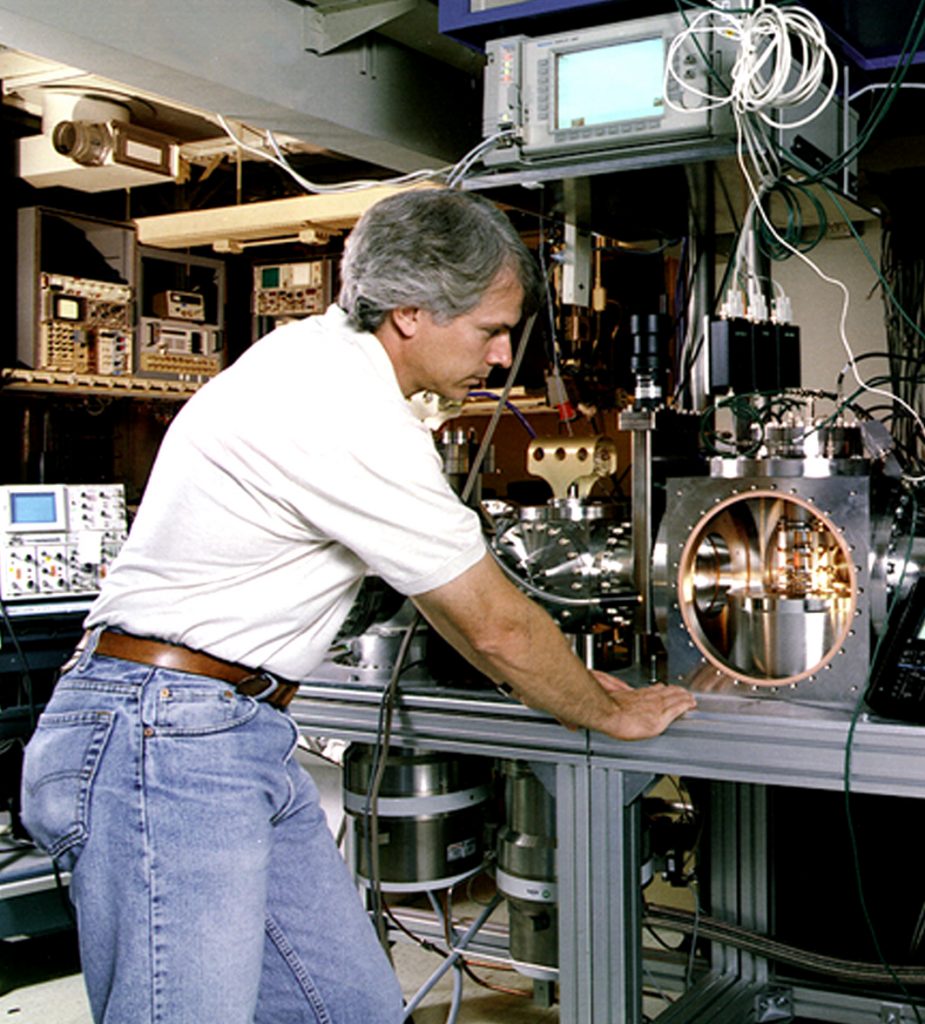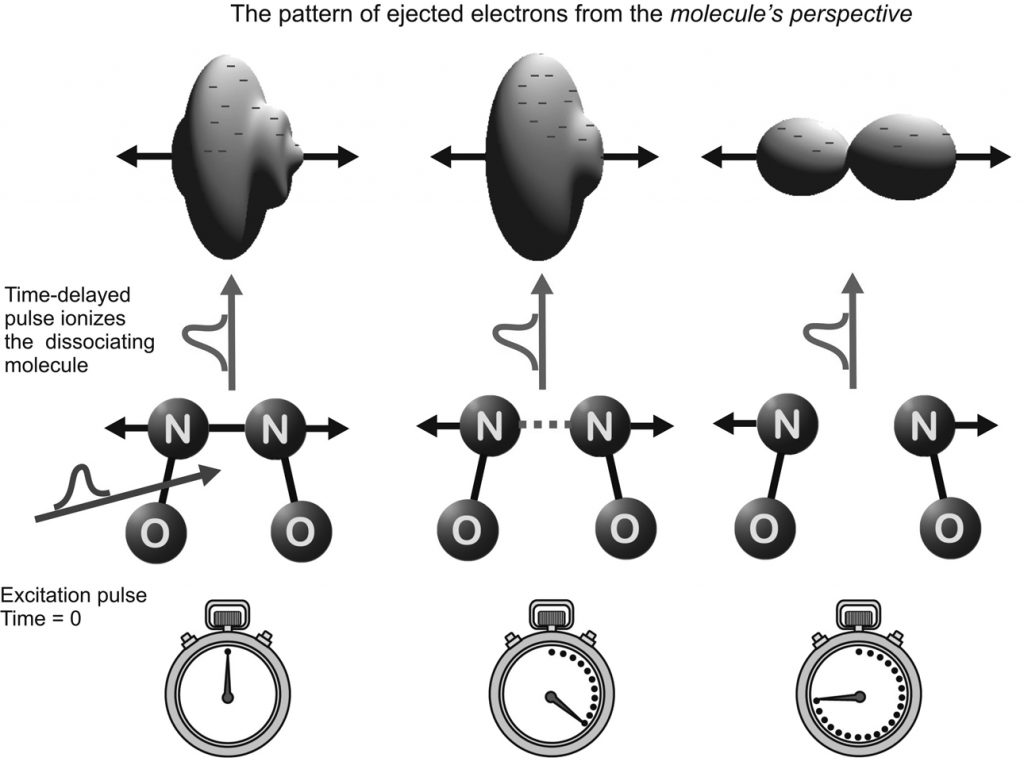
Download 150dpi JPEG image, “hayden.jpg” (Media are welcome to download/publish this image with related news stories.)
ALBUQUERQUE, N.M. — Imagine you are standing, John Wayne style, on the backs of two runaway horses pulling a stagecoach. You try to bring the horses to a stop but instead the harnesses break, the horses separate, and an unlucky passenger gets thrown from the stage.
You learned, first, you are not John Wayne (because he always succeeded). But because you were standing at the heart of the action, you alone of all the bystanders saw exactly how the breakup occurred and how the passenger was ejected.
In work published in the current (Jan. 13) issue of Science, a team of scientists from Sandia National Laboratories (a National Nuclear Security Administration laboratory), the National Research Council in Ottawa, Canada, and elsewhere accomplished this trick scientifically by, in effect, standing on pair after pair of joined nitric oxide molecules (called NO dimers) and watching as each pair split after being excited by an ultrashort laser pulse.
They not only measured the direction of each separating NO molecule but also the direction and energy of an electron spat out as each breakup occurred. The electron reveals the quantum energy levels of the dimer as it separates — a key factor in analyzing the process.
By using a computer to calculate back from the final speeds and angles, the researchers could reconstruct the event to “see” the exact path the electron and each dimer fragment had taken, exactly as though they had ridden on the dimers as they split.
The detailed experimental results are expected to provide tests for computational methods used by chemists to describe complex chemical processes in combustion and atmospheric chemistry involving the NO molecule.
With previous experimental techniques, scientists usually watched these events from the sidelines, their points of view external to the reactions — the so-called “laboratory frame of reference.” Such methods can only average the results obtained from molecules oriented in all different directions, thus obscuring details of the reaction.
The new experiments reconstruct action from the molecules’ perspective — the molecular frame of reference — and yield a more detailed view of reactions. This provides a stringent test of theoretical calculations.
“For those using computing to predict what happens in chemical reactions, without actually doing the experiments, the NO dimer is a very challenging system to calculate,” says Sandia team leader Carl Hayden.
Results showed that the dimers don’t come apart smoothly, as had formerly been thought, but go through an intermediate step. About 150 femtoseconds after the initiating pulse, a more diffuse but definite configuration known as a Rydberg state appears. That state dissociates in about 600 femtoseconds.
Understanding the dissociation process is not simple. “The number of possible electronic states is very large,” says Carl. One purpose of the work is to determine which of these states are important during the dissociation.

The results were obtained by firing femtosecond (millionth of a nanosecond) laser excitation pulses at a beam of NO molecules made cold enough to allow NO dimers to form (about 20 degrees Kelvin). Firing only enough energy to disrupt one dimer with each laser pulse, researchers performed the experiments until as many as 500,000 dissociations had been observed.
A second femtosecond probe pulse, sent with a variable time delay after the excitation, ejected an electron from each dimer as it broke up, providing a “snapshot” of the progress of the dissociation.
The dimer fragments were analyzed by a tool developed at Sandia/California called a time-resolved, coincidence-imaging spectrometer. The spectrometer, which uses a flat detector, is able to capture electrons flying off in three dimensions through use of an electric field that bends the electrons’ flight toward the detector. “The ones that arrive latest have traveled the farthest from the point of ejection,” says Carl. “The energy and angle is what we’re looking for.”
A similar process is used to simultaneously measure velocities of the ions and hence the NO molecular fragments produced.
The work was funded by DOE’s Office of Basic Energy Sciences, Division of Chemical Sciences, Geosciences, and Biosciences.
Results were the product of an international collaboration. The measurements from the molecular perspective were done at Sandia, with complementary work to measure dimer intermediate state lifetimes achieved in Albert Stolow’s group at the Steacie Institute for Molecular Sciences, at the National Research Council of Canada. Quantum mechanical calculations were done by other groups in Canada and at he University of Southern California, while some of the modeling of the 3-D electron distributions was performed at the Open University in the United Kingdom.